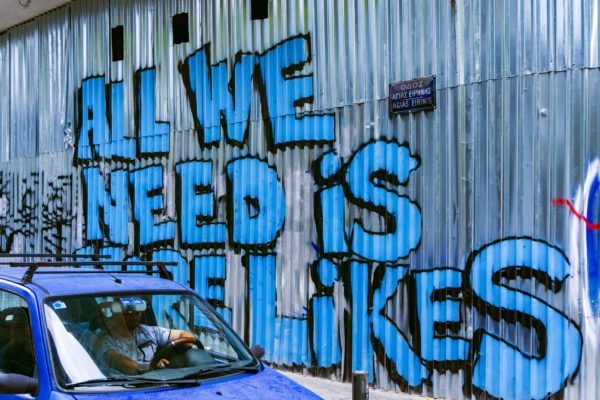This article is a part of a campaign to promote self-love, self-awareness, and self-assurance while discussing social media and its impact on identity.
What do you think about when you hear “social media” and “identity” in the same sentence?
When I hear social media and identity in the same sentence, my immediate thoughts are the negative effects. However, after having an in-depth conversation with Clinical Psychologist Sherry Ann Turton, it was brought to my attention that there is more to the story.

“I”-dentity- What is It?
Identity says a lot in itself. Who and what do “I” identify with? Answering this question can be difficult as it is not as simple as it reads. There are many complexities regarding the formation of our identity. It consists of many things from our morals, values, beliefs and practices, as well as how we are seen through the eyes of the world.

Formation of Identity
Identity is formed through various socialization agents that are constantly developing from infancy to the final stages of adolescence. As a child, your identity is a mere imitation of the beliefs and practices that are projected onto you by your parents; also known as the first socialization agent. As you grow older, secondary socialization agents interject and begin to weigh on your inherited beliefs. A prime example of this is school life. Therefore, a conflict may arise in an effort to balance both socialization agents, resulting in an identity crisis.
In contemporary culture, social media has become a new socialization agent that becomes another point of tension within a person’s identity. This therefore, adds to the external influences that may infringe on one’s sense of self.

Social Media-ting its way into our Lives – Social Media and its Impact on Identity between ages 16-25
Sherry Ann revealed that persons within this age group are still considered to be adolescents, as the pre frontal cortex (the front of the brain) is only fully developed at the age of 25, hence, the impact of social media is more substantial on this age group’s identity.
The negative effects of social media is greatly discussed within our current general discourse, so it is a good place to start. Trying to match the idealistic ideas of life portrayed on social media causes feelings of inadequacy within young people, which can be detrimental to their mental health. This may lead to something called role confusion; and induce a psychological dissonance caused by having two identities; an online persona and a real life persona. This can put a strain on a person’s psyche which can result in choosing the façade over their real identity.
These negative effects also affect males and females in different ways. For females, the negative impacts tend to be focused on their physical attributes and presenting a lifestyle that is perceived by others as lavish. It results in females harbouring strong negative feelings about their own physical appearance, which can impact on their self-confidence. For males, the negative impact can be seen in their understanding of masculinity and what it means to be a man in society. This may translate into aggressive behaviour, lack of emotional expression and high financial status which are all highly regarded and are expected to generate many “likes”.

What They Don’t Tell Us!
Is it just me or does it seem that the older heads like to tell us solely about the negative impacts of social media? Well…Sherry Ann wanted to set the record straight! For adolescent individuals who make lifestyle choices that go against what is accepted, social media provides a place where they can go to feel included. No longer do people have to feel isolated within a fake identity; they can find a community of like- minded individuals online. Although it can manifest negatively through feelings of inadequacy, the idealistic portrayals on social media can also have the positive effect of aspiration. Seeing how other people’s hard work came to fruition can inspire an individual’s decision to stay the course within their own lives.


What to Do and What Not to Do…
Ms. Turton, being a psychological expert, and with the campaign’s mission to weaken the negative corollary that social media tends to have on one’s identity, it was important to ask her recommendations regarding this intent. To alleviate the negative effects whilst utilizing the positive aspects of social media, Ms. Turton strongly advises to manage the time spent on social media; as proper time management can make an immense difference in the way that social media impacts one’s identity. She emphasised the importance of knowing what your values and beliefs are and staying true to those, as well as learning to discern and discriminate information; as everything you read and see on social media is not necessarily real.
Not forgetting the ways that social media can positively impact one’s identity, Ms. Turton suggested ways in which social media can continue to inspire persons between the ages of 16-25. Representation of various groups within various demographics is a good place to start. When younger people are able to see persons like themselves on such a public platform, it encourages them to stay true to who they are and not aspire to be something they’re not because it is what is “socially accepted”. She also recommended that parents and parental figures become more aware and adept with social media which can aid in implementing certain barriers or boundaries that is necessary to prevent the risks of negative effects on an adolescent’s personal identity.










Great Article! Loved the insight shared from a positive perspective. I’m also encouraged to challenge myself to spend just a little less time on social media.
I agree Renee, this truly has some great insight. This should really be known throughout our society as common knowledge so that our young people do not fall into these mental traps.
Kudos to the writer and the catchy section headings!
Atiba and Renee, Wow! Tank you so much. I am glad you found it insightful.